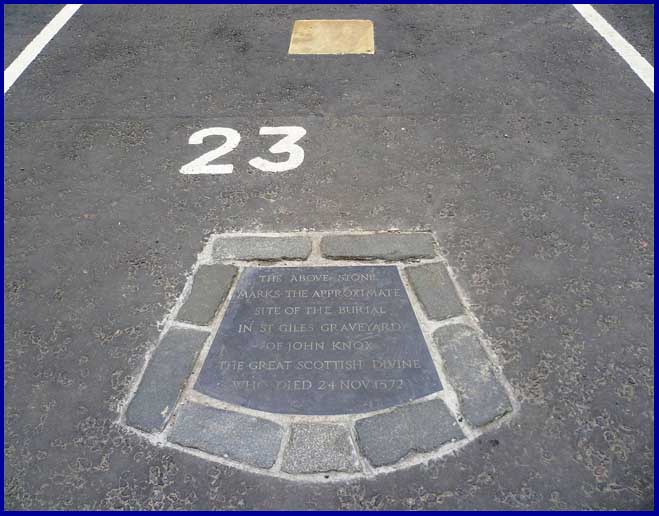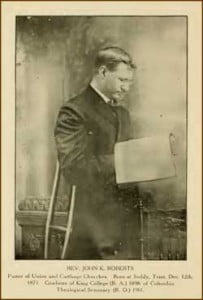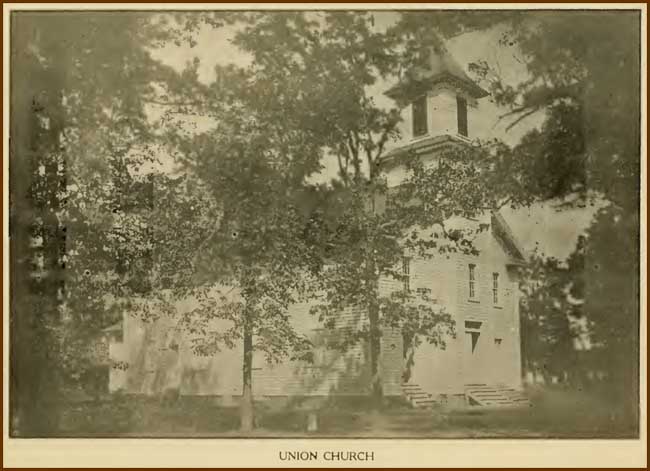“The first godly band”
A covenant can most easily be thought of as a contract between God and man. As Presbyterianism was gaining ground in Scotland, so too the understanding of covenants. So it is that those Scottish Presbyterians, who came to be known as Covenanters, sought to bind themselves under a series of covenants, seeking to uphold Presbyterian doctrine, worship and government as the only expression of religion in the land.
It was in response to the perception that Roman Catholicism was attempting to regain its position in Scotland, by way of royal marriage, that the first “band” or covenant was signed. A document of great importance in connection with the history of the Reformation in Scotland, what is today known as the First Covenant of Scotland bound its signatories to uphold and promote “the blessed work of God and his Congregation [i.e., the Protestants] against the Congregation of Satan” [i.e., the Roman Catholics]. Among those signing the covenant were the Earls of Argyll, Morton, Glencairn and John Erskine of Dun. The text of this First Covenant follows:
The First Covenant of Scotland. At Edinburgh, 1557.
WE perceiving how Satan in his members, the Antichrists of our time, cruelly do rage, seeking to overthrow and destroy the Gospel of Christ, and his Congregation, ought, according to our bounden duty, to strive in our Master’s Cause, even unto the death, being certain of the Victory in him: The which our duty being well considered, We do promise before the Majesty of God, and his Congregation, That we (by his grace) shall with all diligence continually apply our whole power, substance, and our very lives, to maintain, set forward, and establish the most blessed Word of God, and his Congregation: And shall labour according to our power, to have faithful Ministers, truly and purely to minister Christ’s Gospel and Sacraments to his people. We shall maintain them, nourish them, and defend them; the whole Congregation of Christ, and every Member thereof according to our whole powers, and waging of our lives, against Satan and all wicked power that doth intend Tyranny or trouble against the foresaid Congregation. Unto the which holy Word, and Congregation, we do join us; and so do forsake and renounce the Congregation of Satan, with all the superstitious abomination and idolatry thereof. And moreover, [we] shall declare ourselves manifestly enemies thereto, By this our faithful Promise before God, testified to this Congregation by our Subscription at these Presents.
At Edinburgh, the third of December, anno 1557. God called to witness.
A. Earle of Argyle.
Glencarne.
Mortoun.
Archibald, Lord of Lorne.
Iohn Erskin of Dun,
Et cetera.
Then in God’s providence, within just a few years, this was the picture throughout Scotland:
“. . . In Scotland we hear that there have been some disturbances, I know not of what kind, respecting matters of religion; that the nobles have driven out the monks and taken possession of the monasteries; that some French soldiers of the garrison have been slain in a riot, and that the Queen was so incensed as to proclaim the banishment of the preacher Knox by sound of horn, according to the usual custom in Scotland, when they mean to send any one into exile. What has become of him I know not,” . . . .London, May 1559.
“. . . Everything is in a ferment in Scotland. Knox, surrounded by a thousand followers, is holding assemblies throughout the whole kingdom. The old Queen (dowager) has been compelled to shut herself up in the garrison. The nobility, with united hearts and hands, are restoring religion throughout the country, in spite of all opposition. All the monasteries are everywhere levelled with the ground; the theatrical dresses, the sacrilegious chalices, the idols, the altars, are consigned to the flames; not a vestiage of the ancient superstition and idolatry is left.” — London, August 1, 1559.
” . . . The Scots have in their camp the preachers Knox and Goodman, and they call themselves the ‘Congregation of Christ.’ Their next step was to send to the Queen to retire from Leith, if she would not be driven from thence by force and violence. And from this time they began to treat an alliance with England.” — London, Dec. 1, 1559.
[excerpted from letters of Bishop Jewel to Peter Martyr]
Words to Live By:
It is the Lord who raises up kings, and who brings down nations. (Judg 2:16; Isa. 9:11; Prov. 21:1). More importantly, salvation belongs to the Lord (Ps. 3:8; Jonah 2:9). When the Lord turns His face toward us, we shall be saved. When the Lord sovereignly sends His Spirit, then and only then might a nation be called back from sin and destruction to repentance and godliness. When Reformation came to Scotland, it was the work of the Lord and not the work of men. Pray the Lord would so move across this earth again. Pray that Christ would be lifted up, that all men might be drawn to Him.




